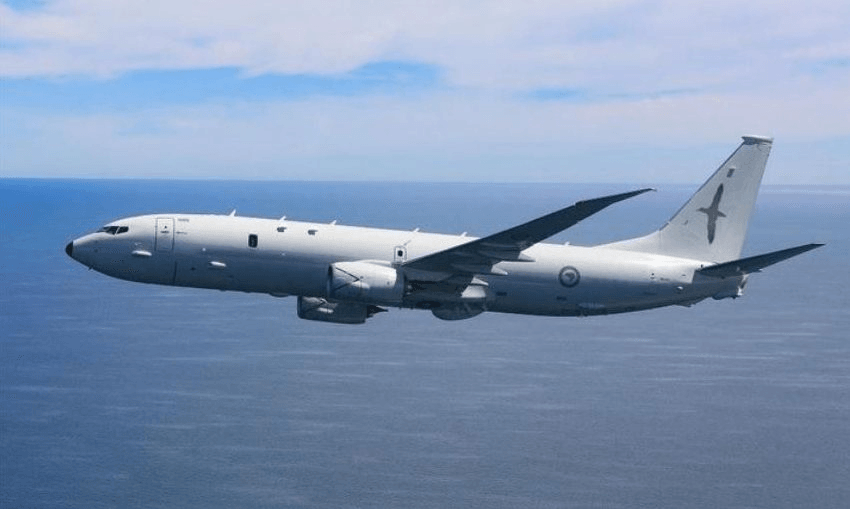The purchase of four surveillance planes signals an even closer military alignment with the United States, and the reflects badly on our non-aligned status, writes former Green Party defence spokesperson Keith Locke.
It was disappointing to see a Labour-led government agree to spend $2.3 billion on four P8A surveillance planes equipped to detect and fight submarines. Back in 2000 a Helen Clark Labour-led government fiercely resisted an expensive upgrade the six P3 Orions for anti-submarine warfare. Clark commented: “Anyone who argues $560 million for the Orions when there is no evidence of hostile submarines in our area would have to be barking.” She said that good surface surveillance would not cost anything like the price of the then Project Sirius anti-submarine upgrade.
As the Green Party’s defence spokesperson back in those times I fully backed the rejection of Project Sirius and, what followed shortly after, the scrapping of our air combat force. We were moving towards an independent defence policy, with equipment procurement geared more to international peacekeeping, and the needs of South Pacific nations.
Now the Labour/NZ First coalition is turning the clock back, buying surveillance planes, optimised for anti-submarine warfare, which are only useful to fight alongside America in a major war. Tellingly, when the defence minister, Ron Mark, was asked if he also wanted a New Zealand air strike force back, he answered, “Yes.”
There are four big downsides to the purchase of the P8s. The first is cost. There are plenty of maritime surveillance planes with high technical specifications, that can be purchased for less than $100 million. Canada’s Field Aviation provides such planes for clients including Australia and Sweden. Most of the $2.3 billion to be spent on the P8s could be saved for needed social spending.
The second downside is that the P8s, as war-fighting planes, will spend much of their time overseas on exercises with Five Eyes partners, or on coalition missions, most likely in the Middle East. They will be less available for what we really need for fisheries patrols or search and rescue over our Exclusive Economic Zone, the Southern Ocean and the South Pacific.
The third downside is that we will be moving further away from an independent foreign policy, because the P8 purchase can only be interpreted as siding militarily with America against China. The New Zealand P8s will be fitted out with surveillance systems, communications platforms, and weapons targeting, all geared to be interoperable with the American and Australian P8s, so that the three nations can fight together.
This is at a time when on many issues New Zealand is more aligned with China than Donald Trump’s America – on trade, climate change, the Iranian nuclear deal, and support for the United Nations.
The fourth downside for New Zealand is the threat to our trade. Why should we so unnecessarily alienate China when, as a major trading partner, it has a capacity punish us through regulations, both subtle and unsubtle. China hasn’t gone down that path so far, seeing us as perhaps the most accommodating of its Five Eyes adversaries. But why push our luck? We are right to criticise China’s poor human rights record, and Beijing will have to swallow that. But it’s stupid for New Zealand to add to that “problem” by moving into an even closer military alignment with the United States.
The best role for New Zealand is as an independent player, acting as a mediator, peacemaker and a general advocate of progressive policies. Despite commentary to the contrary, we still live in the “benign strategic environment” that Helen Clark talked about back in 2001. Living at the bottom of the South Pacific nobody is likely to attack us. But there is plenty of work to do to make the world a peaceful place. Several countries are subject to internal armed conflict, or in a military contention with their neighbours. New Zealand can better help resolve such conflicts if it is seen as being independent and non-aligned.

